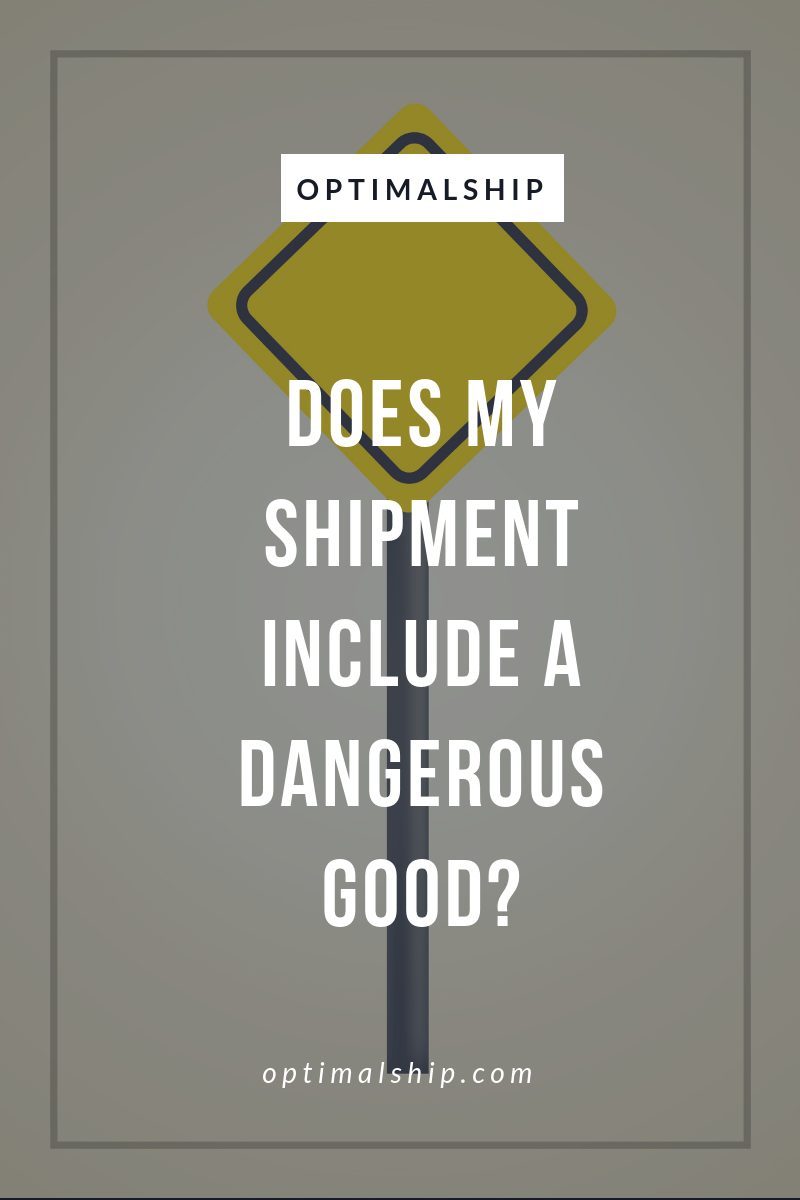
In a rush to do well on my final exams, clean my apartment to “white glove” standards, say goodbye to friends, and all that accompanies the end of a semester of college, I accidentally packed a brand new bottle of perfume in my carry on luggage. I learned the hard way to follow airport security regulations --- I ended up having to throw a full bottle of my favorite perfume away.
Just as this perfume bottle was deemed not safe to be carried onto an aircraft, many goods are prohibited or restricted to be shipped via or even just carried onto planes. Fortunately, shippers don't leave us in the dark, and have given us the nine classification categories of dangerous goods.
Prohibited, Restricted, and No Risk Goods
Depending on operational, legal, and risk management implications, goods may be determined prohibited, restricted, and/or as "presenting no risk".
Prohibited Commodities are not acceptable for transport under any circumstances. They will be refused for transport with no exceptions. These commodities are different for every country and shipper.
Restricted commodities may be acceptable for transport. They require evaluation and approval to ship.
What is a Dangerous Good?
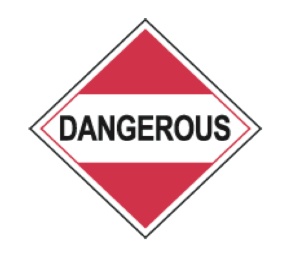
Dangerous goods are restricted commodities. The following common goods are or can be considered dangerous goods: aerosol sprays, airbags, ammunition, butane, car batteries, lithium batteries, matches, perfume and cologne, dry ice, fireworks, gasoline, jet fuel, lighters, paint, food flavoring, and electronic equipment. These are almost always considered dangerous goods and are very strictly regulated by some countries and all shipment carriers.
Goods that are considered ‘not dangerous’ do not have hazardous properties and do not present a risk to health, safety, transport, or the environment. It would be very difficult to produce a piece of clothing or jewelry that would require a dangerous goods label, for example. Items that are not dangerous goods often do not require special labeling and can be shipped freely, depending on the importing and exporting country's regulations.
Dangerous goods, however, have hazardous properties that present a risk to health, safety infrastructure, transport, and the environment. Dangerous goods may be referred to as HAZMAT. They are subject to packaging and labeling regulations.
Regulations on Dangerous Goods
The shipper is responsible for declaring, packaging, and labeling dangerous goods. Transportation of dangerous goods are a risk when not correctly packed, declared, handled, or labeled. Dangerous goods shipments are always subject to additional charges.
Items that are considered dangerous goods vary by country. Depending on the commodity, country, packaging, transportation type, and quantity, you may or may not be able to ship certain dangerous goods to every country. You must have dangerous goods approval to ship dangerous goods.
Technical Information for Curious Parties
In the United States, the United States Department of Transportation regulates dangerous goods. The IATA, or International Air Transport Association, regulates air transport of dangerous goods, which is also applicable within all countries which work under the ICAO regulations. The ADR regulates road transport of dangerous goods, which is also applicable within all countries that have adopted the ADR convention and within Europe, the EU directives concerning the transport of Dangerous Goods -- the Dangerous Goods Safety Advisor.
Hazard Classifications
All chemicals are, to some degree, hazardous to human health or to the environment. Hazards can arise when a substance changes -- as a result of storage and transport conditions -- or reactions with other substances in the immediate surrounding area. The United Nations (UN) has divided hazardous substances into nine broad groups or classes, based on their state (gas, liquid, solid) and their properties, or the type of hazard they present. Here they are displayed in a graphic from the Department of Transportation.
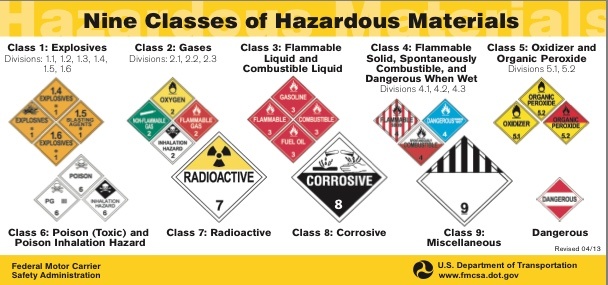
These classifications help with understanding how to safely handle the dangerous good.
Class 1 Explosives
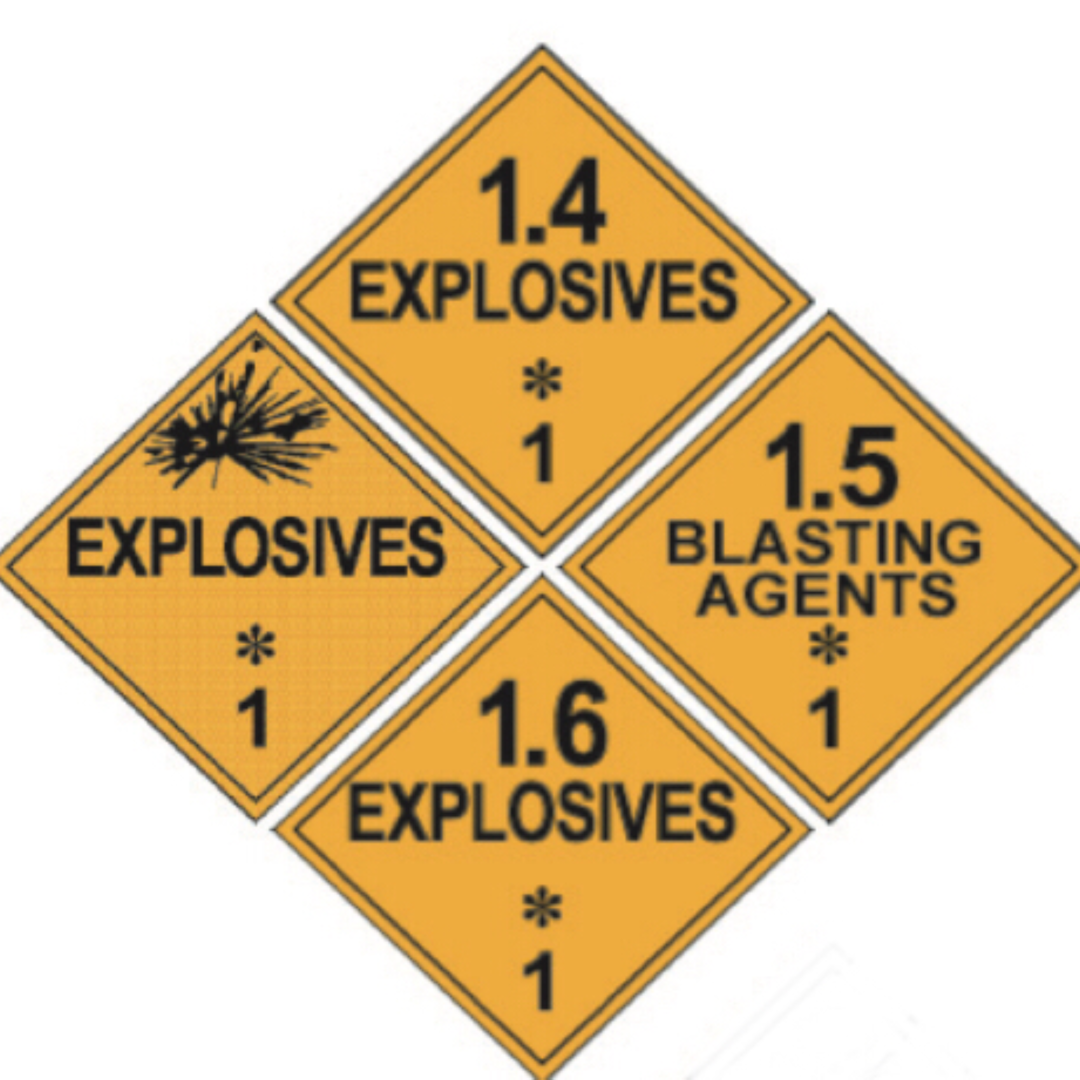
Explosions are usually caused by rapid burning of a substance or mixture of substances in the presence of oxygen.
Examples of explosives include:
- nitroglycerin
- bombs
- fireworks
- small arms ammunition
- gunpowder
- fuses and smoke-signals
- blasting explosives
Goods in class 1 are “compatible” if they can be safely stowed or transported together without significantly increasing the chance of an accident.
Class 2 Gases
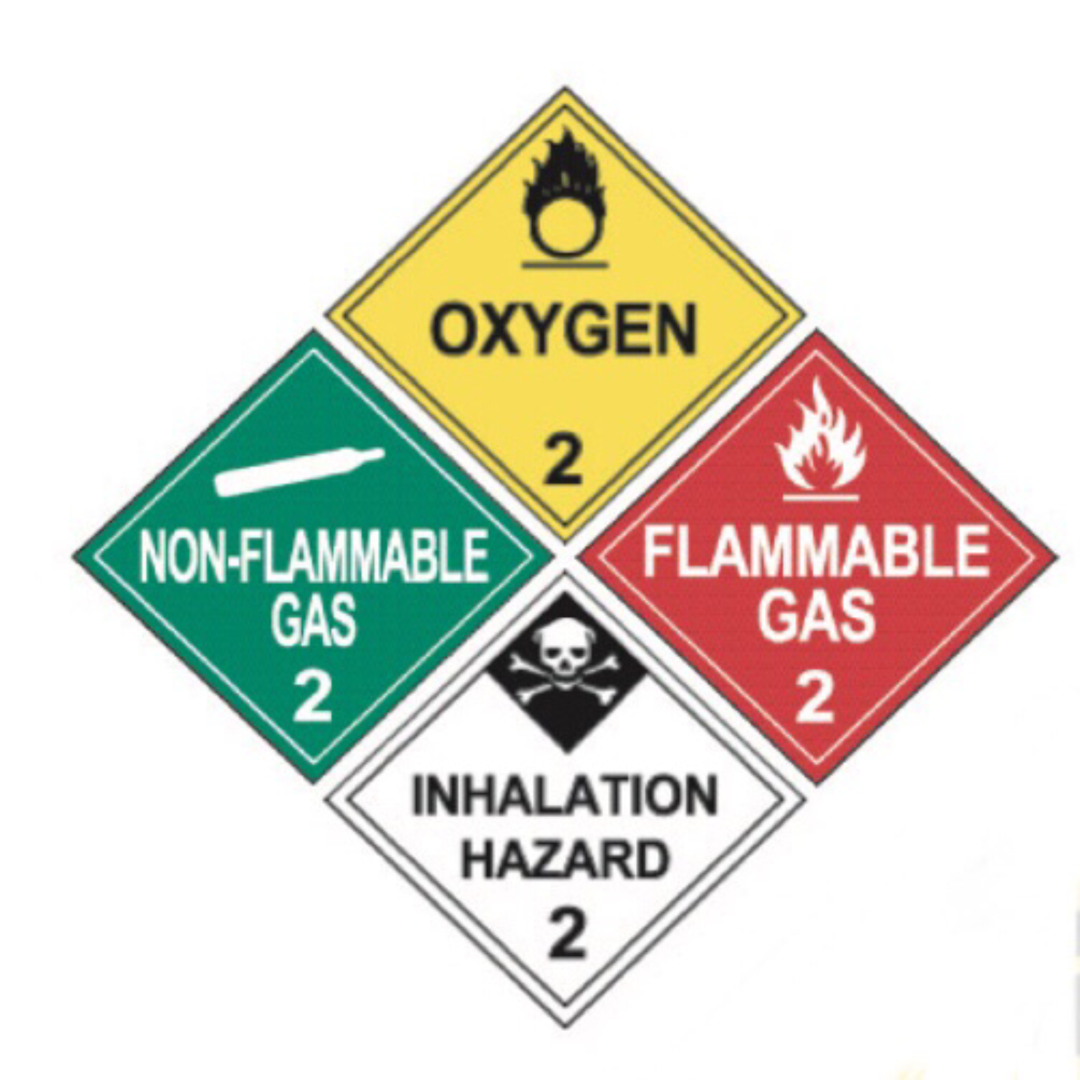
Gases may be either compressed, liquefied, or refrigerated liquefied. They are grouped according to the primary hazard they present during transport: flammable, non-flammable and non-toxic, and toxic gases.
Flammable Gas Examples
- Butane (often used as lighter fluid)
- Propane
Non-Flammable Gas Examples
- Nitrogen
- Carbon Dioxide
- Oxygen
Toxic Gas Examples
- Chlorine
- Sulphur Dioxide
Class 3 Flammable Liquids
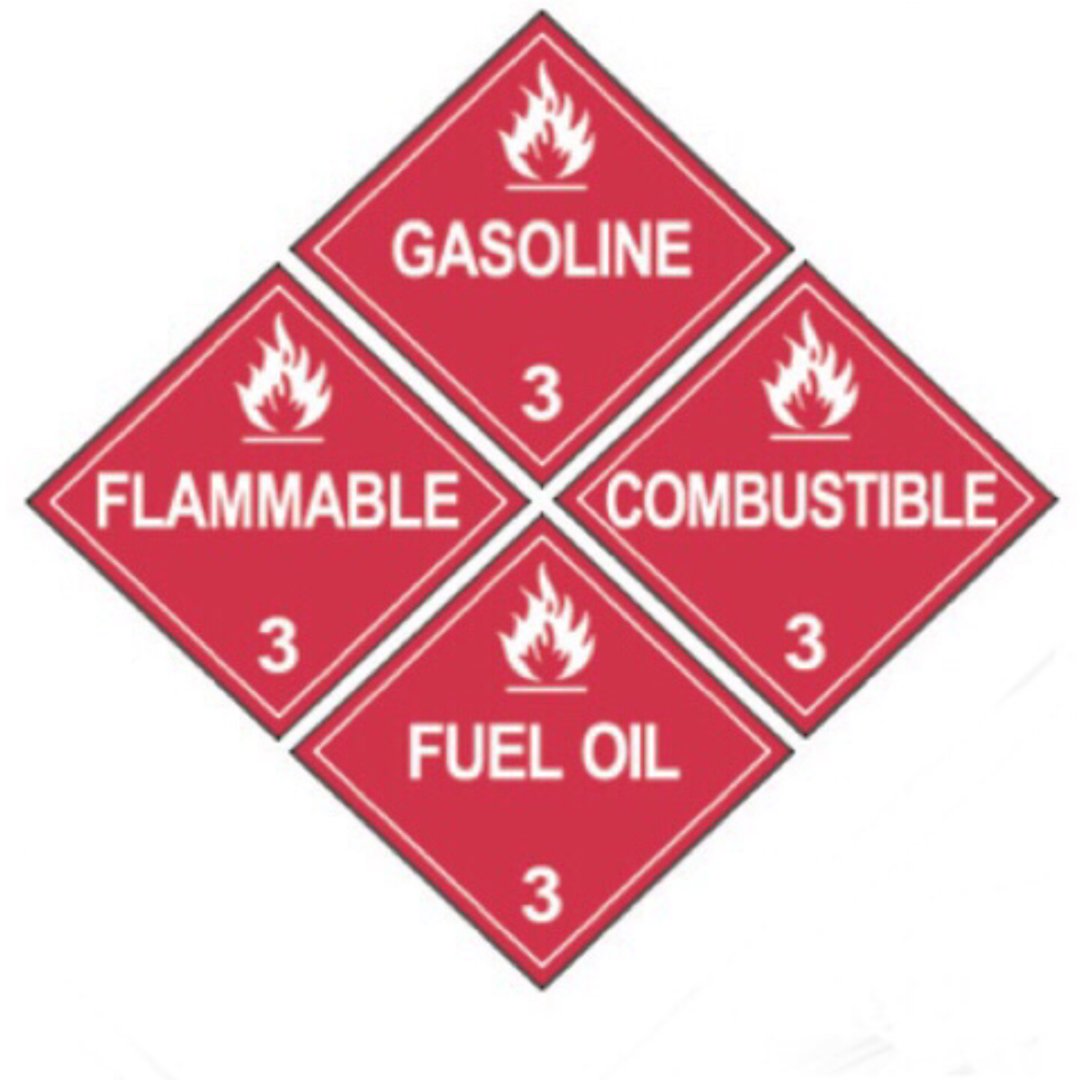
Flammable liquids and liquid desensitized explosives are included in class 3. They give off flammable vapors at or below a “flashpoint” (a specific temperature). Flashpoints vary if a substance contains added substances or impurities.
Examples of Flammable Liquids
- Allyl Chloride
- Benzine
Examples of Liquid-Desensitized Explosives
- Nitroglycerin solution in alcohol
- Nitrocellulose solution
Class 4 Flammable solids; substances liable to spontaneous combustion; substances which, in contact with water, emit flammable gases
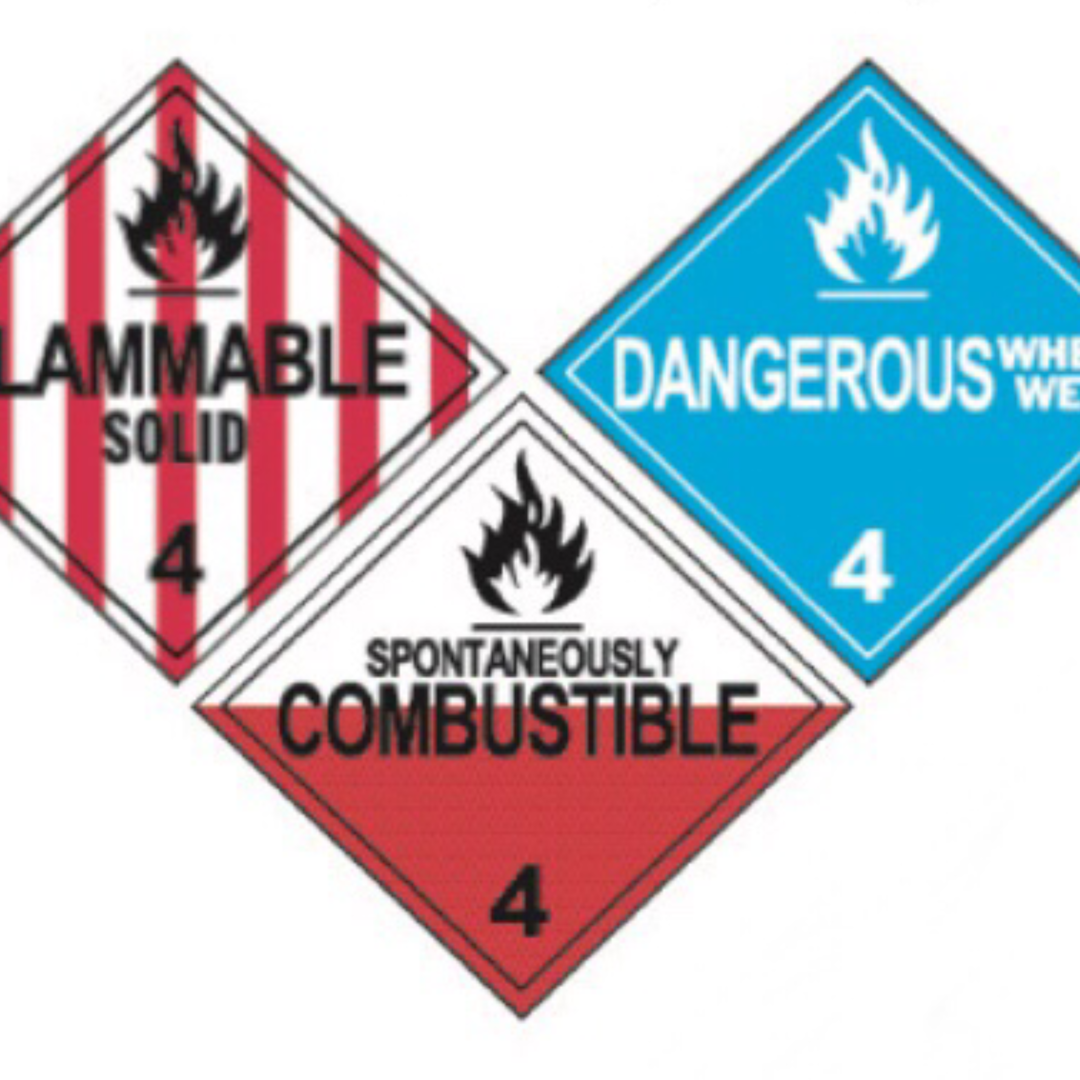
This class comprises substances, except those classified as explosives (class 1), that readily catch fire or may cause or contribute to a fire. There are three groups.
The first group consists of flammable solids, self-reactive substances and some explosives, which readily catch fire and which may cause fire through friction. They may be treated to suppress their explosive properties.
Flammable Solid Examples
- Magnesium Powder
- Matches
- Jute
The second group consists of substances liable to spontaneous combustion, including mixtures and solutions, which ignite within 5 minutes of coming into contact with oxygen, or may heat up in contact with oxygen. They ignite only when in large amounts and after ‘long’ periods of time. Examples include sodium sulphides and white phosphorus.
Substances Liable to Spontaneous Combustion Examples
- Sodium Sulphides
- White Phosphorus
The third group consists of substances that are spontaneously flammable or give off flammable gases in dangerous quantities -- when they come into into contact with water.
Substances That are Spontaneously Flammable When They Come In Contact with Water Examples
- Ferro Silicon
- Aluminum Silicate
Class 5 Oxidizing Substances and Organic Peroxides
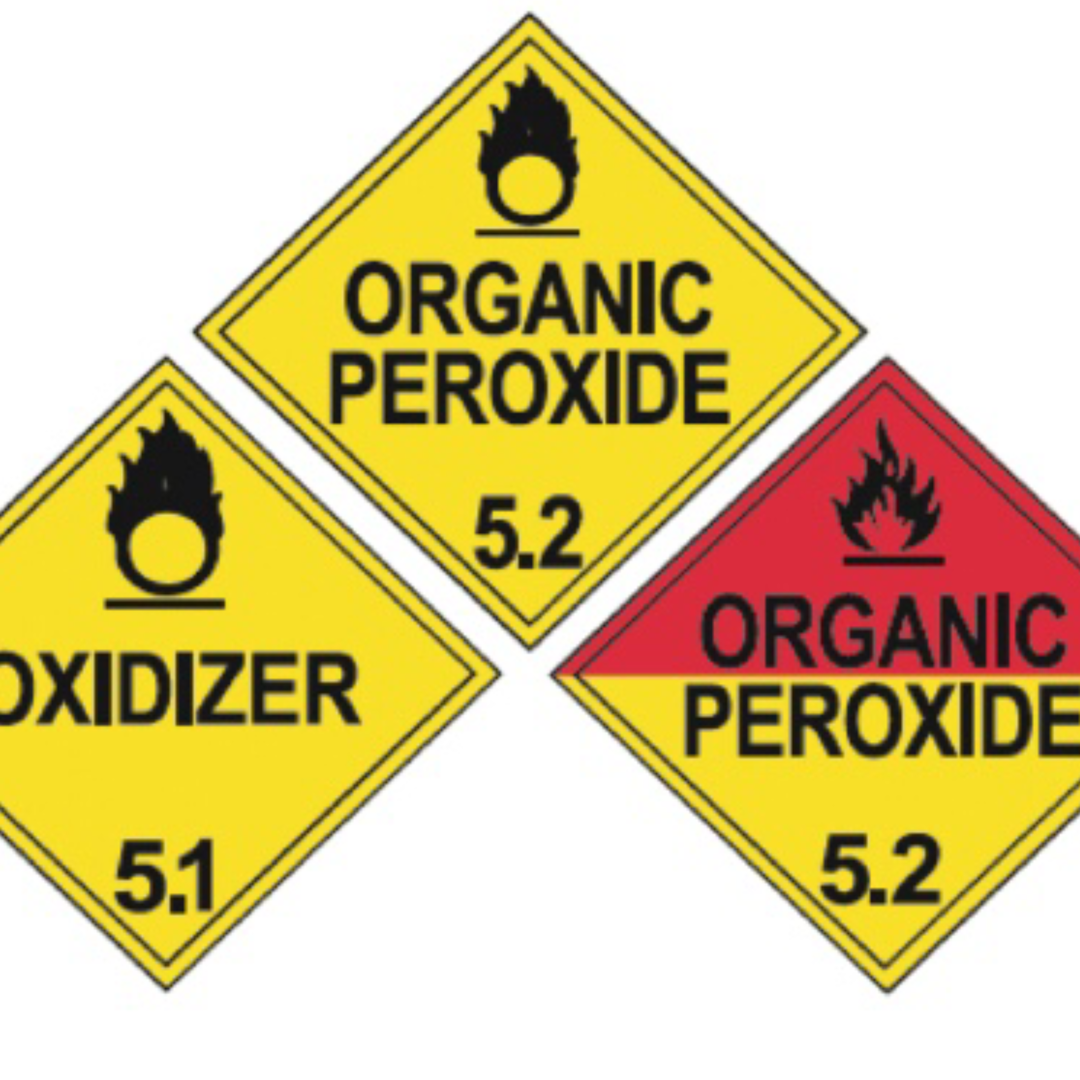
This class is comprised of oxidizing substances and organic peroxides. Oxidizing substances produce their own oxygen, under certain circumstances. They increase the risk and intensity of fire in combustible material with which they come into contact. Examples include hydrogen peroxide and sodium peroxide. Organic peroxides are substances which decompose at normal or elevated temperatures, resulting in harmful, or flammable, gases or vapors. These substances are very harmful to eyes and very dangerous to transport.
Examples include ALL organic peroxides class b to f.
Class 6 Toxic and Infectious Substances
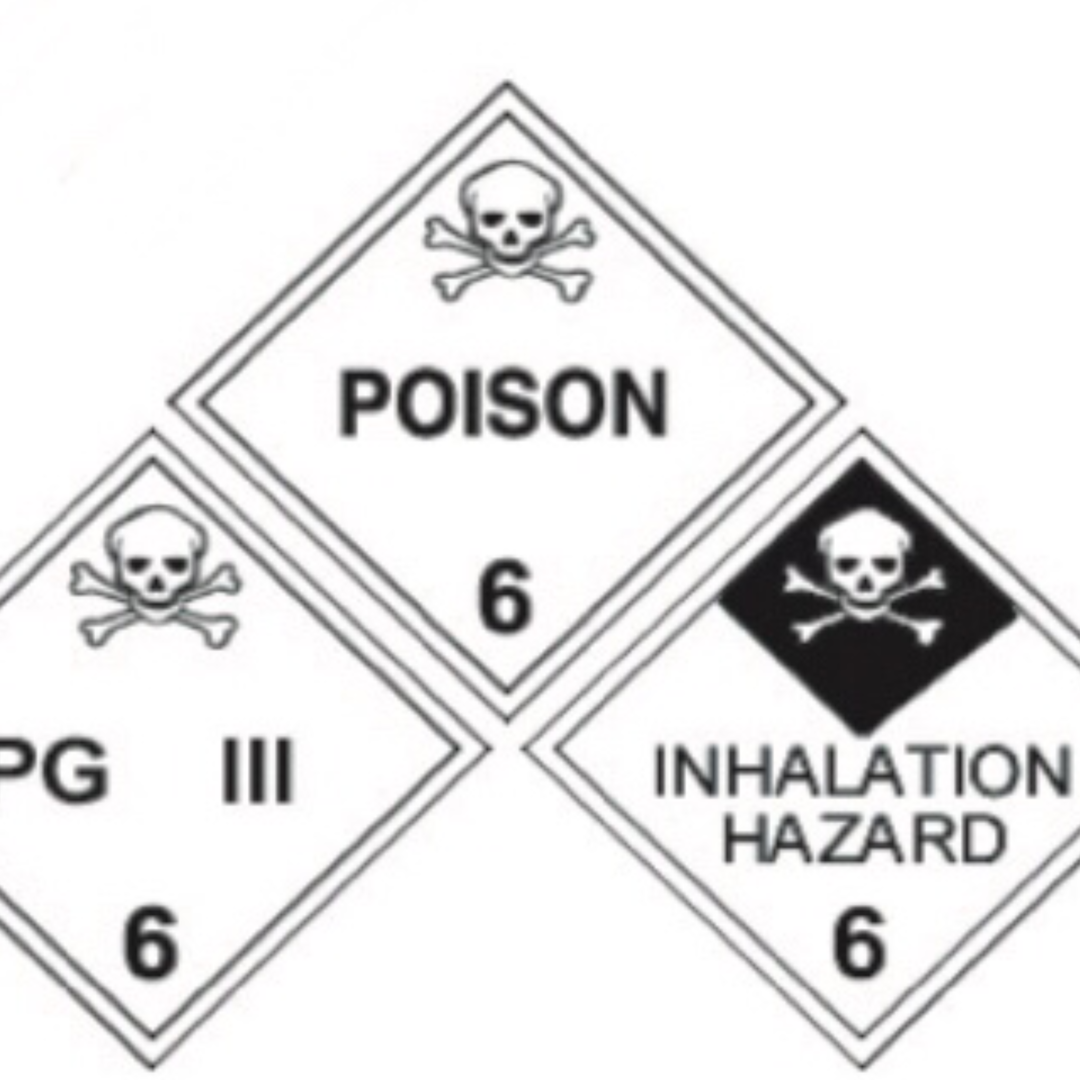
Toxic substances are poisonous, as they can cause death or serious injury if swallowed, inhaled, or if they come in contact with skin. They must not be close to food items. Infectious substances are known or expected to contain microorganisms including bacteria, viruses, parasites, fungi, and other agents which can cause disease in humans or animals.
Toxic Substance Examples
- Arsenic
- Hydrocyanic Acid
- Mercury Compounds
Infectious Substance Examples
- Bacteria
- Parasites
- Anything that can infect animals or humans
Class 7 Radioactive Material
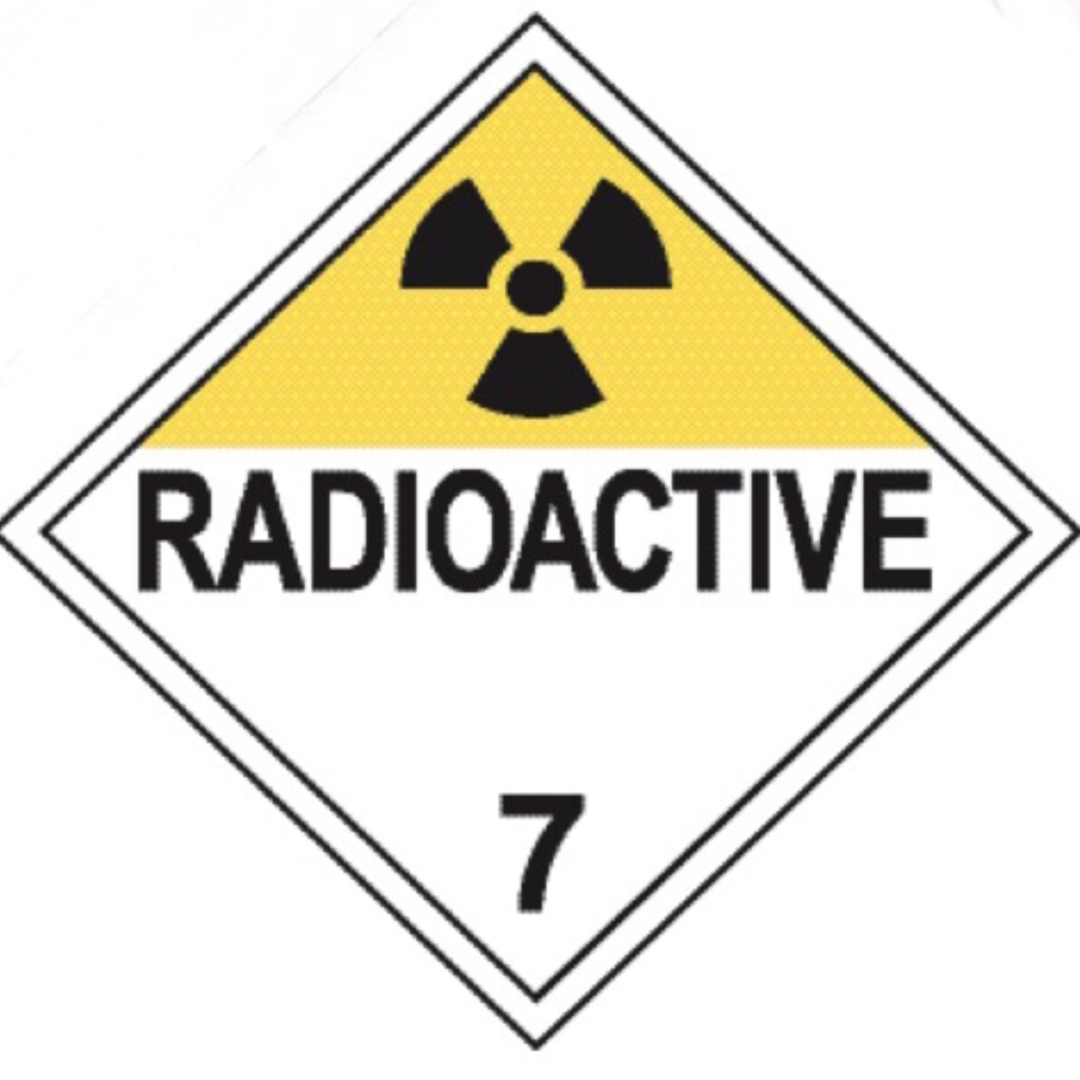
Radioactive materials emit radiation to some degree, which is invisible and may damage body tissue. Carrying radioactive materials involves special procedures, specific equipment, and specialist training.
Radioactive Material Examples
- Uranium Metal Pyrphoric
- Uranyl Nitrate
Class 8 Corrosive Substances
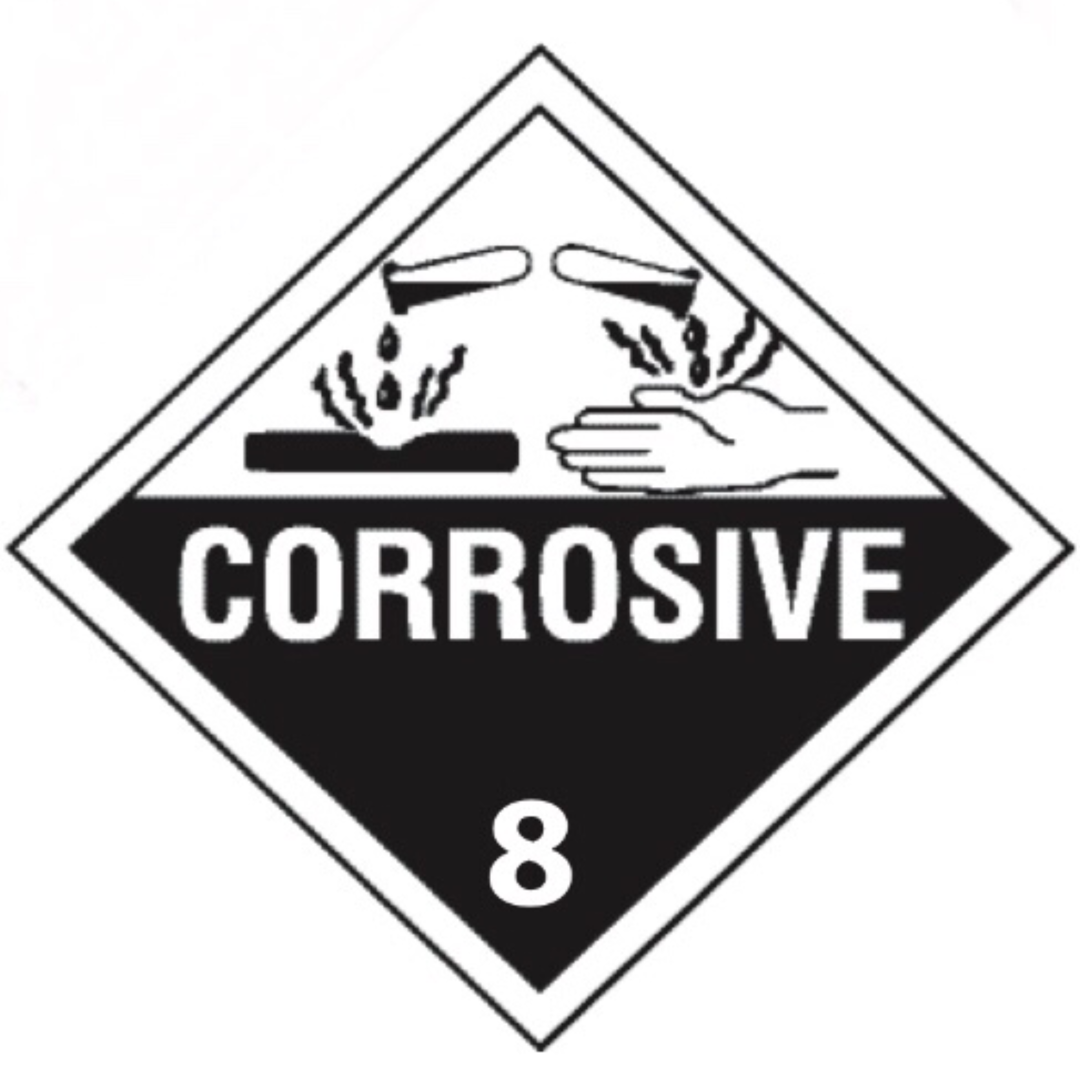
Corrosive substances cause severe damage when they come into contact with living tissue or leak -- and materially damage or even destroy other cargo or even transportation vessel.
Corrosive Substance Examples
- Most acids
- Sodium Hydroxide
Class 9 Miscellaneous dangerous substances and articles and environmentally hazardous substances
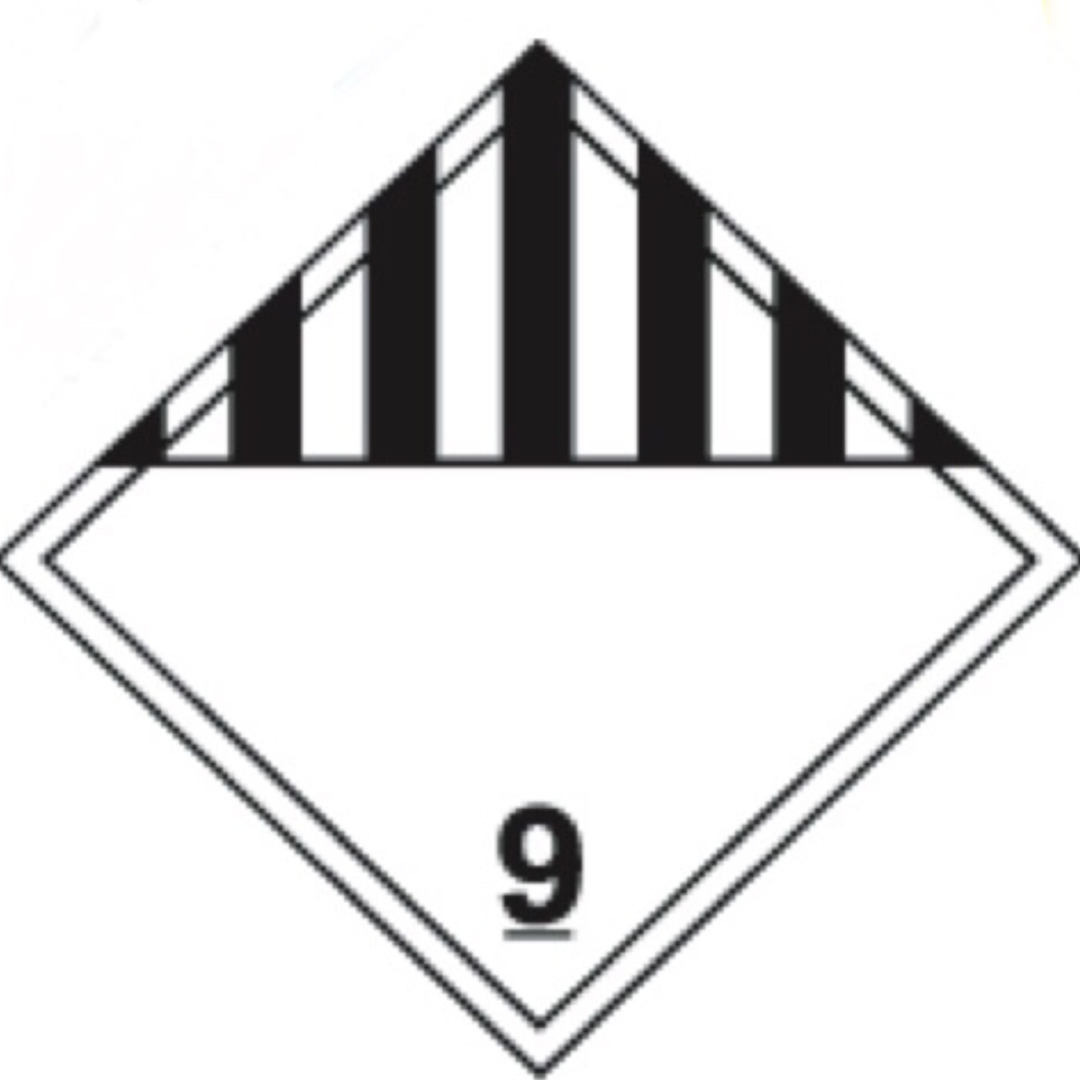
Class 9 covers substances and articles which present a danger that is not covered in other classes. Class 9 covers substances which are transported at very high temperatures and genetically modified microorganisms.
Some Examples
- Asbestos Fiber
- Stabilized Fish Meal
- Solid Carbon Dioxide
How do I determine if my shipment contains a dangerous good?
Please contact our customer service (CS) department if you are not sure if a commodity you wish to ship is considered a dangerous good. You may contact CS via phone at 972-383-9901 or via email at customerservice@optimalship.com.
To determine if your commodity is dangerous, please have a Material Safety Data Sheet (MSDS) for the commodity in question to reference on the call. This helps us know product specifications. If you do not have a MSDS, the best way to obtain one is to contact the manufacturer of the commodity. In the United States, they are required by law to provide you one. You may also be able to find an MSDS online. Here‘s an example of a MSDS for a perfume from Proctor & Gamble, that's on their website.
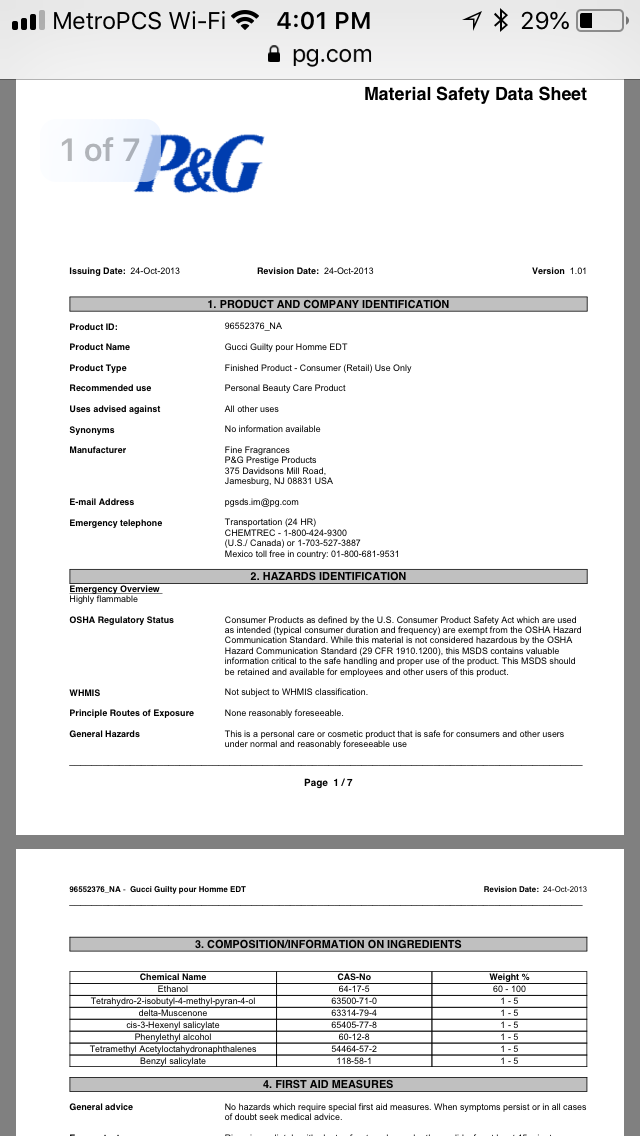
What do I need to do in order to ship a dangerous good?
If we determine that the commodity is a dangerous good, we can help you obtain approval to ship the item. You will need to fill out some paperwork, but for most dangerous goods shipments, it's relatively straight forward. This process can take 3 to 5 business days. Additionally, you may be required to be IATA certified, or receive dangerous goods training. You will need to package and label your shipment appropriately.
Best wishes to you in determining if your shipment contains any dangerous goods. Give us a call or shoot us an e-mail for help!